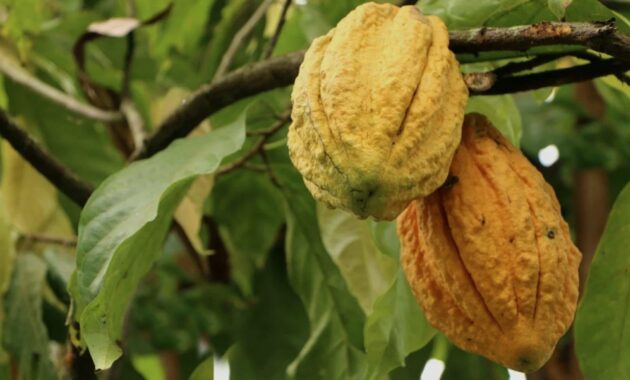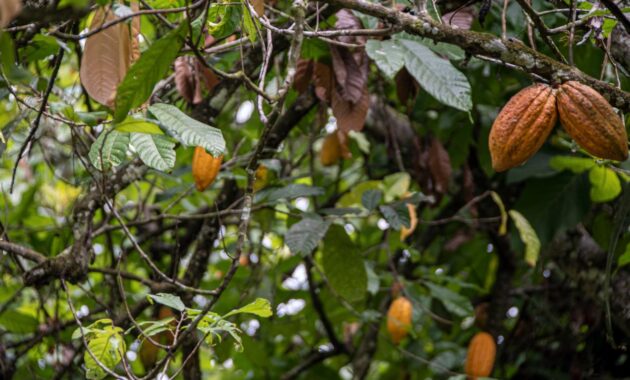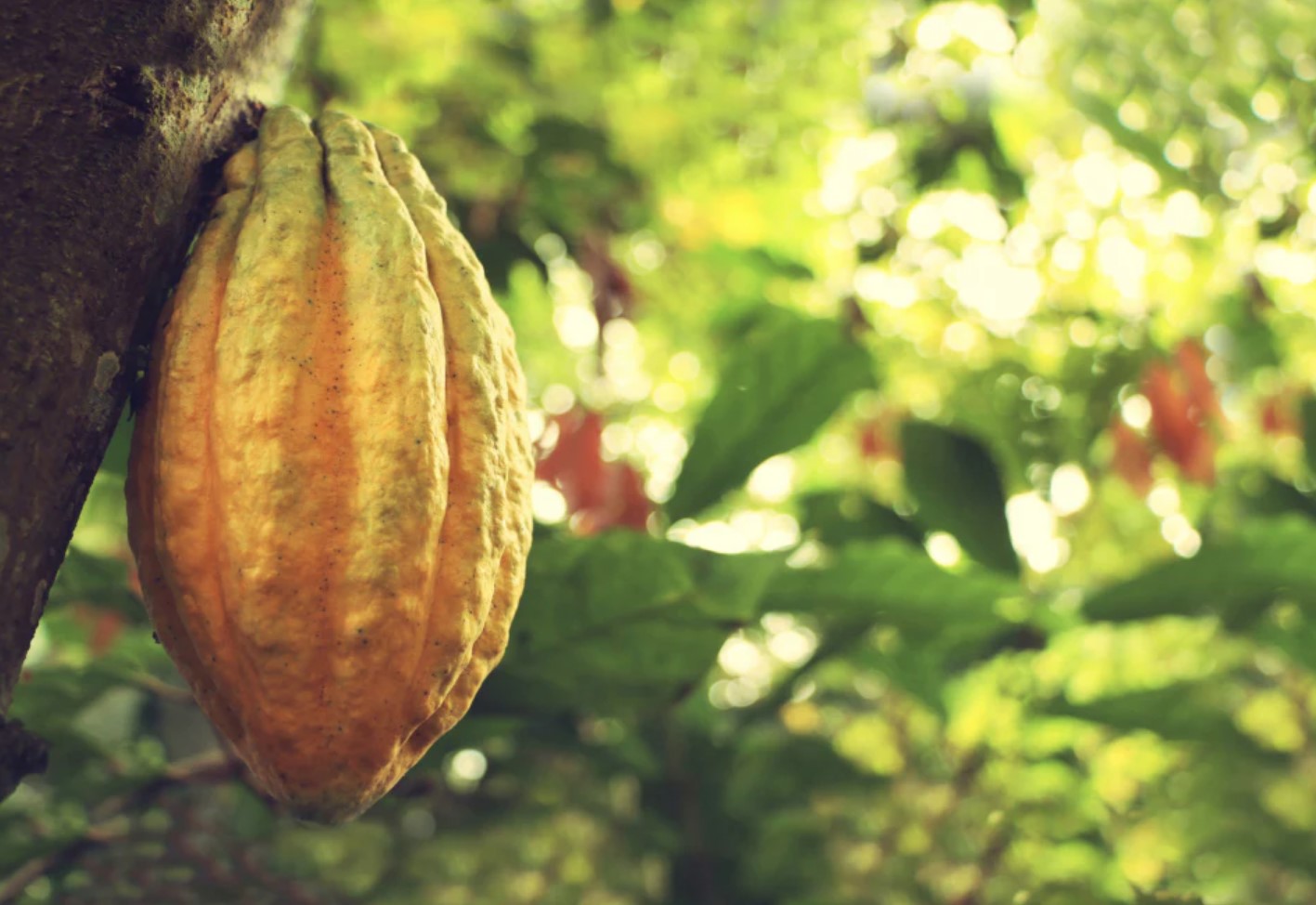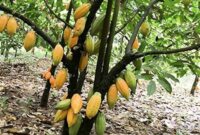
Let me take you on a journey into the world of the Nacional plant, a remarkable variety of cacao known for producing some of the finest chocolate in the world. My love for chocolate took me to the lush landscapes of Ecuador, where I first encountered this extraordinary plant. It was there that I learned about the rich history and incredible flavor profiles that Nacional cacao offers. Trust me, this plant is more than just a source of chocolate; it’s a piece of cultural heritage!
What is the Nacional Plant?
The Nacional plant, scientifically known as Theobroma cacao var. Nacional, is a unique strain of cacao native to the Amazon basin and primarily found in Ecuador. This variety is renowned for its complex flavors and aromatic qualities, making it a favorite among chocolate connoisseurs. What sets Nacional apart from other cacao varieties is its rare genetic makeup, which contributes to its distinct taste profile.
Key Characteristics of the Nacional Plant:
- Scientific Name: Theobroma cacao var. Nacional
- Common Names: Nacional cacao, fine flavor cacao
- Origin: Primarily found in Ecuador
- Height: Grows up to 4-8 meters (13-26 feet)
- Leaves: Glossy, dark green leaves that are broader than those of other cacao varieties
- Flowers: Small, pale pink to white flowers that bloom on the trunk and branches
- Fruit: Oval-shaped cacao pods that can vary in color from green to yellow when ripe, containing the prized cacao beans.
The Rich History of the Nacional Cacao
The story of the Nacional plant is deeply intertwined with the cultural heritage of Ecuador. Historically, this cacao variety was cultivated by indigenous people long before the Spanish arrived in South America. It was considered a sacred plant, revered for its role in rituals and ceremonies. The unique flavor of Nacional cacao quickly caught the attention of chocolate lovers worldwide, especially during the 19th century.
I remember visiting a small cacao farm in Ecuador, where the owner shared stories of how the Nacional variety was nearly lost due to disease and hybridization. It’s astonishing to think that such a flavorful plant was on the brink of extinction! Thanks to the efforts of dedicated farmers and conservationists, the Nacional cacao is now being revived, bringing its exquisite flavors back to life.
The Lifecycle of the Nacional Plant
Understanding the lifecycle of the Nacional plant helps appreciate the journey from tree to chocolate bar. Here’s a brief overview of the key stages:
- Seed Germination: Cacao seeds are planted in nutrient-rich soil, typically under shade. The seeds germinate within 2-3 weeks, and I can tell you, the anticipation of seeing those tiny seedlings sprout is exhilarating!
- Young Plant Development: As the seedlings grow, they develop into young plants with broader leaves. It usually takes about 3-5 years for the trees to reach maturity and start producing flowers.
- Flowering: Nacional cacao trees produce small, fragrant flowers that bloom directly from the trunk and branches. Each flower is tiny, but they are crucial for pod development. I still remember how amazed I was the first time I saw flowers sprouting from the trunk—it felt magical!
- Pod Formation: After successful pollination, the flowers give way to cacao pods. These pods develop over several months and can hold anywhere from 20 to 50 cacao beans. The colors of the pods change as they ripen, making the tree look vibrant.
- Harvesting: When the pods turn yellow or orange, they are ready to be harvested. This process is labor-intensive, as each pod is cut from the tree by hand. I spent an afternoon harvesting pods with local farmers, and let me tell you, it’s harder than it looks!
- Fermentation: Once harvested, the cacao beans are fermented for about 5-7 days. This is a critical step in developing the rich flavors we associate with chocolate. The aroma during fermentation is intoxicating, and it’s where the magic begins!
- Drying: After fermentation, the beans are spread out to dry under the sun for about 1-2 weeks. I remember the first time I witnessed this process—it felt like watching a ritual, as each batch of beans was meticulously cared for to ensure the best quality.
- Roasting: Finally, the dried beans are roasted, which enhances their flavor even further. The smell of roasting cacao is heavenly and instantly brings to mind all the delicious chocolate treats.

Growing Your Own Nacional Plant
If you’re thinking about growing your own Nacional cacao, here are some key tips I’ve learned along the way:
- Climate Conditions: The Nacional plant thrives in tropical climates with temperatures between 20°C to 30°C (68°F to 86°F). They love humidity and should be protected from strong winds and extreme temperatures. When I attempted to grow one in a cooler climate, it didn’t end well!
- Soil Requirements: Cacao trees prefer well-draining, loamy soil rich in organic matter. The ideal pH level should be between 6 to 7. I often mix in compost to create a nutrient-rich environment—this has worked wonders for my plants!
- Shade Needs: These trees naturally grow in shaded areas under larger trees. Providing dappled sunlight is crucial for their growth. I made the mistake of placing mine in full sun, and the leaves started to scorch.
- Watering: Cacao trees require consistent moisture, so regular watering is essential, especially during dry periods. However, be cautious not to overwater, as cacao is susceptible to root rot. I learned this lesson the hard way—keeping a moisture meter handy can help!
Caring for Your Nacional Plant
Proper care is essential to ensure your Nacional plant thrives and produces quality cacao beans:
- Fertilizing: Cacao trees are heavy feeders, and I recommend using a balanced fertilizer every 6-8 weeks during the growing season. I’ve had great success with organic fertilizers, which have made my plants healthier.
- Pruning: Regular pruning is crucial for maintaining the shape of the tree and improving airflow. I tend to prune during the dry season, which helps encourage new growth when the rains arrive.
- Pest Management: Watch for common pests such as the cacao pod borer and aphids. I’ve found that using organic pest control methods, like neem oil, has been effective without harming beneficial insects.
Culinary Uses of Nacional Cacao
The beans harvested from the Nacional plant are prized for their flavor and versatility. Here are some delightful uses I’ve explored:
- Fine Chocolate Production: Nacional cacao is known for producing high-quality chocolate with complex flavors. From dark to milk chocolate, this variety shines through. I’ve had the pleasure of tasting artisanal chocolate made from Nacional cacao, and it’s an experience like no other!
- Baking: Cacao powder derived from Nacional beans is fantastic for baking. I love using it in brownies, cakes, and cookies to add a rich chocolate flavor. It elevates even the simplest of recipes!
- Beverages: Hot chocolate made from Nacional cacao is rich and luxurious. I often whip up a cup of hot cacao with a sprinkle of cinnamon, and it feels like a warm hug on a chilly day.
Health Benefits of Nacional Cacao
Beyond its delicious taste, Nacional cacao offers numerous health benefits:
- Rich in Antioxidants: Cacao is packed with antioxidants, particularly flavonoids, which help protect against oxidative stress. Whenever I indulge in a piece of dark chocolate, I remind myself that it’s a health boost!
- Mood Enhancer: Cacao has been shown to enhance mood and promote feelings of happiness. Whenever I’m feeling a bit down, a square of dark chocolate always lifts my spirits!
- Heart Health: Studies suggest that cacao may improve heart health by lowering blood pressure and improving circulation. Eating chocolate in moderation can be part of a heart-healthy diet—how great is that?
Common Challenges in Growing the Nacional Plant
While cultivating the Nacional plant is rewarding, several challenges can arise:
- Pest and Disease Susceptibility: Cacao trees are prone to pests and diseases, making vigilance essential. Early detection can save your harvest, so I recommend regular inspections.
- Slow Growth Rate: Patience is key when growing cacao. It can take several years for trees to start producing pods. I often remind myself that good things come to those who wait!
- Temperature Sensitivity: Nacional cacao is sensitive to cold temperatures. If you live in a cooler area, consider planting your cacao in a greenhouse or bringing it indoors during winter. I’ve learned to protect my plants from unexpected cold snaps, and it has made a significant difference.
Final Thoughts
The Nacional plant is a true gem in the world of cacao, offering not just delectable chocolate but also a rich cultural history. Whether you’re considering growing your own cacao tree or simply enjoying the chocolate made from Nacional beans, understanding this plant’s journey enhances our appreciation for the flavors we love.
So, the next time you savor a piece of chocolate made from Nacional cacao, remember the beauty and dedication behind each delicious bite. It’s a testament to nature’s generosity and the hard work of those who cultivate this magnificent plant.
Let me know if you need more information or have any other topics in mind!



